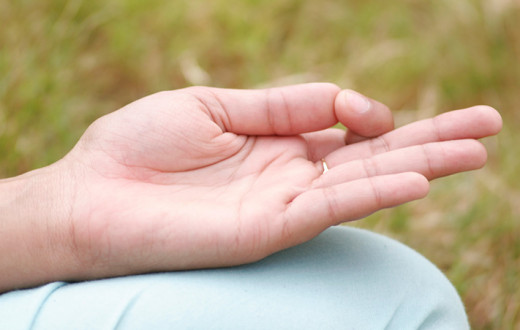By Lucia Whalen ┃Posted: May 26, 2018
Each year, we are reminded throughout the holiday season to practice gratitude and take the time to express our appreciation for those we love. However, in our busy and chaotic world, the idea of practicing gratitude can very easily remain as just that: an idea. Between the everyday stressors of work, life, and relationships, and the seasonal stressors of consumer desires and, let’s face it, the weather, gratitude is too easily replaced by losing ourselves in the daily grind.
That is, unless we make an effort to actively practice gratitude.
Gratitude, much like yoga, is a practice. And in order to see the positive effects of gratitude in our lives, it is necessary to maintain a routine of practicing gratitude. Modern neuroscience backs this up, and many studies on gratitude now demonstrate the way in which practicing gratitude can actually result in a healthier body and mind (and even marriage!). By using tools to intentionally practice gratitude on a daily basis, we can train our brain to think positively, ultimately resulting in our feeling happier on a regular basis!
Ready to train your brain to adopt an attitude of gratitude? Add one or all of the following tools into your daily routine and enjoy the shift in your perspective!
1. Keep a gratitude journal
Putting our gratitude into writing is one of the most effective ways to start experiencing a shift in attitude immediately. Keeping a gratitude journal and journaling first thing in the morning or before bed is a great way to get into the habit of practicing gratitude daily. Writing as little as 5-10 things that you feel grateful for can make all the difference in the way you feel. These items can be as seemingly insignificant as your socks or as big as the universe. Remember - nothing is too big or too small for gratitude!
2. Give thanks at meals
When it comes to developing a habit of gratitude and creating a new neurological pathway in the brain, what could be better than saying thanks before eating? Eating is one of the most routine and regular behaviors performed by every person, and mealtimes and snack times present the opportunity to slow down and feel grateful 3-6 times per day (depending on how often you eat). Not used to giving thanks before meals? No need to get too fancy. Keep it simple by taking a few breaths and thinking about where your food came from, who grew it, the money you used to pay for it, and the fact that the food is in front of you.
3. Say Thank You
Don’t forget the magic word! Often, while rushing through our daily tasks, we all too easily forget to say ‘thank you’ to the people who help us. Whether it is the cashier at the grocery store or your significant other, make sure you take the time to thank every person who helps you and makes a difference in your life, no matter how big or small. Saying ‘thank you’ and acknowledging those who help us allows us to recognize the abundance of love and support that surrounds us.
By Lucia Whalen





















